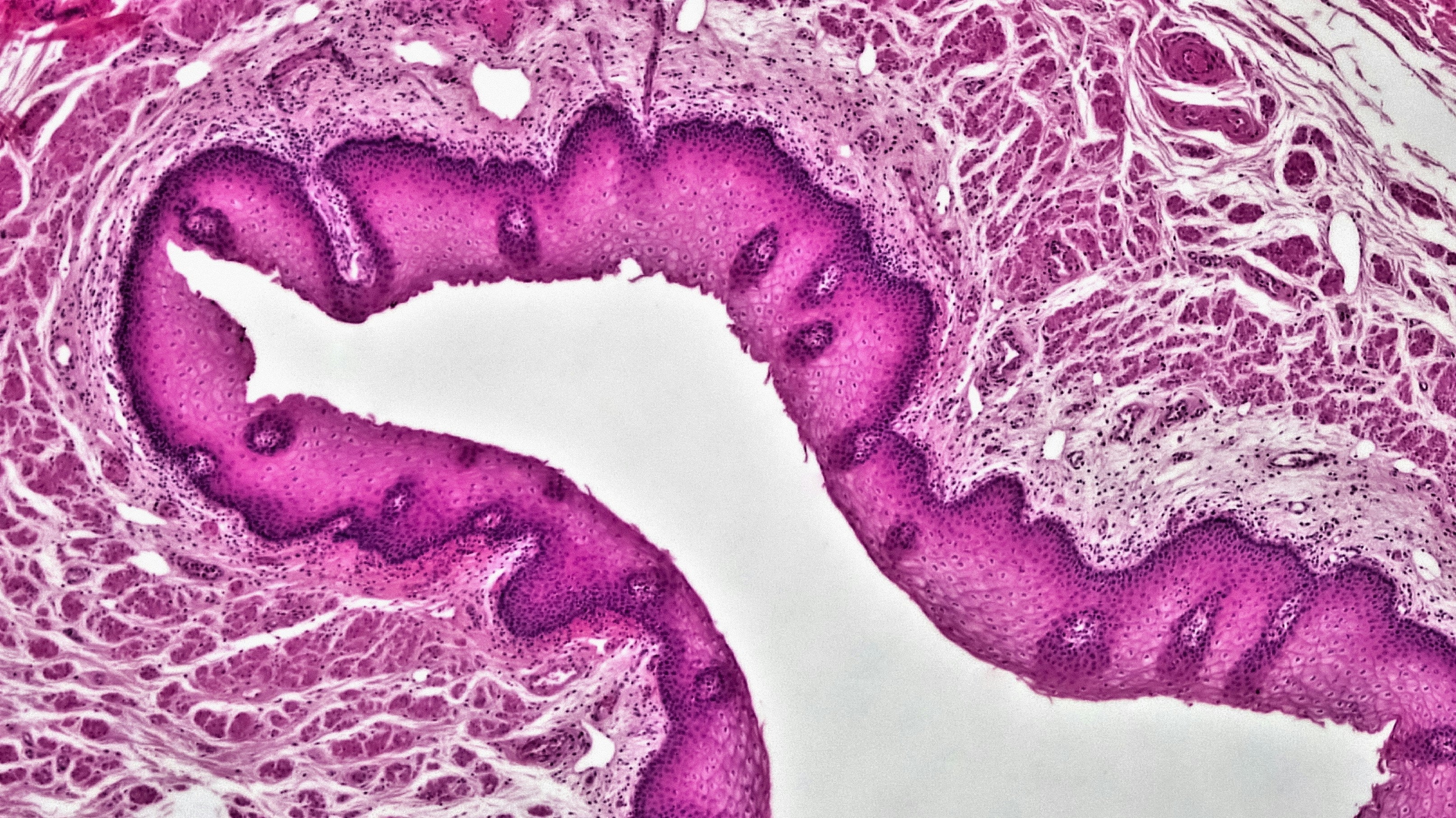Cuando se trata de la salud intestinal, hay innumerables suplementos en los estantes: probióticos, enzimas digestivas, prebióticos y más. Pero un compuesto destaca por su capacidad única de actuar a nivel genético: el sulforafano. Presente de forma natural en vegetales crucíferos como el brócoli, el sulforafano ha sido ampliamente investigado por su papel en la activación de un poderoso factor de transcripción conocido como Nrf2 (factor nuclear eritroide 2 relacionado con NF-E2).

Nrf2: El Guardián Celular
Nrf2 suele describirse como el regulador maestro de la respuesta antioxidante del cuerpo. Activa cientos de genes implicados en la desintoxicación de compuestos dañinos, la reducción de la inflamación y la reparación del daño oxidativo. Las investigaciones siguen demostrando que Nrf2 también está estrechamente relacionado con las uniones estrechas (TJs, por sus siglas en inglés): estructuras especializadas que mantienen unida la barrera intestinal.
Las proteínas de unión estrecha como las claudinas, la ocludina y la ZO-1 actúan como los “guardias de seguridad” de la pared intestinal. Cuando funcionan correctamente, las sustancias nocivas permanecen en el intestino, donde deben estar. Pero cuando estas proteínas se alteran, la permeabilidad intestinal aumenta, lo que conduce a lo que comúnmente llamamos intestino permeable (leaky gut).
Según el Dr. John Gildea, el científico que estabilizó el sulforafano en BrocElite®, “Nrf2 es el regulador maestro de las uniones estrechas”. Esto significa que activar Nrf2 no solo combate el estrés oxidativo, sino que también fortalece directamente la barrera intestinal.
Lo Que Muestran las Investigaciones
-
En ratones con colitis, la activación de Nrf2 aumentó la expresión de claudina-1 y ocludina, mejorando la integridad de la barrera intestinal y protegiendo contra la inflamación (Li et al., 2018).
-
En modelos de rata con lesión pulmonar aguda, Nrf2 reguló al alza la ZO-1 y la ocludina en los tejidos pulmonares, mostrando nuevamente amplios efectos protectores sobre la función de barrera (Cho et al., 2005).
-
Por el contrario, cuando la función de Nrf2 se reduce —como durante la sepsis o una lesión hepática— las proteínas de unión estrecha disminuyen, lo que provoca barreras permeables en el intestino, la barrera hematoencefálica (BBB) y el hígado (Shah et al., 2007; Lu & Cederbaum, 2008).
En pocas palabras, Nrf2 no solo combate el estrés oxidativo: es central para mantener intactas las barreras más importantes del cuerpo.
El Sulforafano: El Activador de Nrf2
Aquí es donde el sulforafano brilla. Aunque muchos compuestos pueden activar Nrf2, el sulforafano se considera el activador dietético natural más potente descubierto. Los brotes de brócoli, en particular, están repletos de precursores de sulforafano, que pueden convertirse en sulforafano en circunstancias ideales. Sin embargo, este es un proceso frágil, lo que nos llevó a desarrollar sulforafano estabilizado para una entrega óptima en BrocElite® Plus.
Nuestra investigación interna muestra que la exposición al glifosato —un pesticida común presente en muchos cultivos transgénicos— puede disminuir la actividad de Nrf2 hasta en un 30%. Una sola comida de comida rápida puede exponerte a estos niveles de glifosato. Aquí tienes una lista de alimentos que debes evitar si esto te preocupa. Afortunadamente, también hemos comprobado que tomar BrocElite® Plus restaura la actividad de Nrf2, revirtiendo estos efectos dañinos.
Haz clic aquí para aprender más sobre cómo BrocElite® puede ayudarte a protegerte contra el glifosato y fortalecer tu barrera intestinal.

Más Allá del Intestino: Cerebro Permeable y Salud Sistémica
Las uniones estrechas no solo están en el intestino. También son críticas en la barrera hematoencefálica, los pulmones y el hígado. Cuando el nivel de Nrf2 es bajo y la regulación de las uniones estrechas falla, no solo terminas con intestino permeable, sino también con cerebro permeable, permeabilidad hepática y defensas pulmonares comprometidas.
Por eso, apoyar de forma natural a Nrf2 con sulforafano tiene beneficios de gran alcance. En lugar de enfocarse en una sola parte del cuerpo, mejora la integridad de múltiples sistemas.
Entonces, ¿es el sulforafano el mejor suplemento para el intestino?
Suplementos intestinales como los probióticos y las enzimas digestivas son útiles, pero operan principalmente a nivel microbiano o de descomposición de alimentos. El sulforafano, en cambio, actúa mucho más profundo: activa Nrf2 para reparar las vías celulares y restaurar la integridad estructural del revestimiento intestinal en sí.
Teniendo en cuenta sus amplios beneficios, el sulforafano puede ser, sin duda, el suplemento más poderoso para cualquier persona que lidie con problemas intestinales, inflamación crónica o disfunción de barreras sistémicas.
Referencias:
- Cho, H. Y., Reddy, S. P., Debiase, A., Yamamoto, M., & Kleeberger, S. R. (2005). Gene expression profiling of Nrf2-mediated protection against oxidative injury. Free Radical Biology and Medicine, 39(11), 1401–1412. https://doi.org/10.1016/j.freeradbiomed.2005.06.004
- Lu, Y., & Cederbaum, A. I. (2008). CYP2E1 and oxidative liver injury by alcohol. Free Radical Biology and Medicine, 44(5), 723–738. https://doi.org/10.1016/j.freeradbiomed.2007.11.005
- Peng, H., Li, H., Wang, C., et al. (2023). The role of Nrf2 in the pathogenesis and treatment of intestinal diseases. Frontiers in Immunology, 14, 1200111. https://doi.org/10.3389/fimmu.2023.1200111
- Mazariegos, S., et al. (2022). Sulforaphane protects intestinal epithelial cells against LPS-induced changes in intestinal permeability, oxidative stress, inflammation, and apoptosis. Food & Nutrition Research, 65(1), 1952368. https://doi.org/10.1080/21655979.2021.1952368
- Wang, Y., et al. (2022). The protective effect of sulforaphane on dextran sulfate sodium-induced colitis in mice. Frontiers in Nutrition, 9, 893344. https://doi.org/10.3389/fnut.2022.893344
- Rostami, A., et al. (2023). Glucoraphanin and sulforaphane mitigate TNFα-induced Caco-2 barrier dysfunction. Nutrition Research, 115, 61–72. https://doi.org/10.1016/j.nutres.2023.10.004
- Jiang, Q., et al. (2023). Alpha-tocopherylquinone differentially modulates claudins to enhance intestinal epithelial tight junction barrier via AhR and Nrf2 pathways. Cell Reports, 42(9), 113256. https://doi.org/10.1016/j.celrep.2023.113256
- Saber, A., et al. (2023). The rationale for sulforaphane favourably influencing gut homeostasis and gut–organ dysfunction. International Journal of Molecular Sciences, 24(17), 13448. https://doi.org/10.3390/ijms241713448
- Toden, S., & Goel, A. (2017). Dietary phytochemicals modulate intestinal epithelial barrier function: A promising role in gut health and disease. Food Frontiers, 1(1), 36–52. https://doi.org/10.1002/fft2.102
- Kubo, Y., et al. (2019). A protective role of the NRF2-Keap1 pathway in maintaining intestinal barrier. Antioxidants, 8(12), 609. https://doi.org/10.3390/antiox8120609








0 Comment